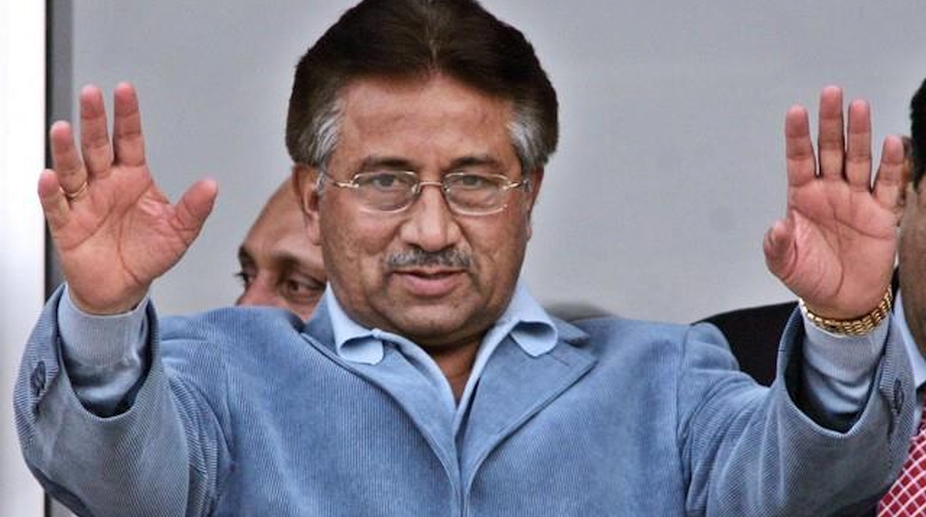RETIRED Gen Pervez Musharraf passed away over the weekend in Dubai, where he had lived since he left Pakistan in 2016. It has been nearly 15 years since he resigned as president though his rule had effectively ended a year or so earlier.
Indeed, the Musharraf era seems a lifetime ago, although those who are not part of Pakistan’s youth bulge remember it well and have strong opinions about it.
And for someone, who was in her first job as a journalist when Musharraf took over, the general may have left power and Pakistan but we were left dealing with and reeling from his legacy.
The violence and unrest (in Balochistan, KP and beyond), an accountability process which is used to tame politicians, a noisy but much restricted media which was first curtailed by the very man who let it loose, and an economy that still struggles to break free of aid. All of this is what Pakistan inherited from him.
Indeed, Musharraf’s story in a way is a story of Pakistan’s politics, where for all that a saviour and strong man promises, he is not able to deliver any more than the much-maligned democrats ~ except for increased violence. And eventually, their inability to have an exit plan is what turns their much-vaunted fairy-tale into a tragedy ~ for Pakistan as well. That protracted departure, ends up swallowing even their achievements, whatever they may have been.
When Musharraf took over, there is no doubt it was a coup welcomed, perhaps far too widely (though quietly in some cases), by political parties, the media, human rights organisations and further. And in a world where religious fundamentalism was beginning to be seen as a threat, he was keen to burnish his modern credentials.
Admiration for Mustafa Kemal, being brought up by a working mother, the dogs in his arms ~ the man in charge of the army and Pakistan went out of his way to prove he was an ‘enlightened’ man of the (post-Cold War) world.
Neither he nor his institution called it a martial law and he took on the vague epithet of ‘chief executive’, promising to rule Pakistan as a technocratic strongman. Reform, especially, economic reform, was his promise. And for many reasons it seemed people were ready to forget the Kargil tragedy and be hopeful for the future. It was a different Pakistan back then: military intervention had promised hope, with faith in political parties and the democratic system being tenuous.
But reform promises to be no easier for military men in Pakistan, whatever the theory may be. Changes to the blasphemy law, taxing the traders, accountability ~ all initiatives ended as quickly as they had begun, sacrificed at the altar of political expediency. You can take a straight-talking military man, but when he wades into Pakistan’s political waters, he swims no differently than the politician.
The events of 9/11 let in the good times, with aid from the US. Reform was limited to the local government system (long abandoned since) and the opening up of the media, allowing news channels to mushroom. Even the privatisation process was eventually scuttled and has since remained stalled.
But the decision to support the West in Afghanistan may have brought good times in the short term only. The dollars have dried up now and Pakistan continues to struggle with militancy in Balochistan, which was triggered by the rape of a female doctor and Akbar Bugti’s assassination.
Terrorism claimed thousands of lives, including Benazir Bhutto’s. It was weakened through a herculean effort and is now threatening the country again. This perhaps is a stronger legacy than the opening up of the media and the surface-level liberalisation he delivered.
Indeed, the blowback in Pakistan in terms of violence and terrorism and the beginning of enforced disappearances are issues we cannot separate from his decisions after 9/11, though the umbilical cord with the militant organisations or the Afghan Taliban was never severed. And these are issues which continue to haunt us; missing people is more than just a wound on Pakistan’s soul, it is our mark of shame.
Even in economic terms, Musharraf’s legacy includes the real estate juggernaut which is now part of the distortion in the economy which we have failed to address.
But personally, it was his exit which is also part of the larger legacy that continues to shape Pakistan. Selfproclaimed military saviours do not know when to exit, and in Musharraf’s case it led to a year-long crisis of protests, terrorist attacks and judicial activism before he finally left. During that time, the siege of Lal Masjid eventually laid the foundations of what is now known as the TTP.
It is said his own institution played a role in this bout of instability. And it seems Pakistan now has to live with being shaken to the core as a state and society, whenever there is a succession battle in the midst. For Musharraf left behind an institution which no longer seems to stop its heads from claiming extensions; before him only military dictators could pull it off. Whether this is simply a coincidence or his policies played a role is yet to be explored.
But in this prolonged and violent exit, borne by the people of Pakistan, there was little of the Musharraf era which was not demonised or delegitimised.
I am not sure if the India-Pakistan peace process should be included here; as a military man who led Kargil after the Lahore Declaration and someone who survived attacks which involved low-ranking military men, he should have known better than most that grand gestures and policy reversals are best put in place along with consensus-building. He should have done more to reach out to his own while he was reaching out to India.
However, in the end, if Musharraf’s ‘political career’, exit and trial can prove to our mighty ones the hazards of direct interventions, it may well be his most positive legacy for Pakistan











